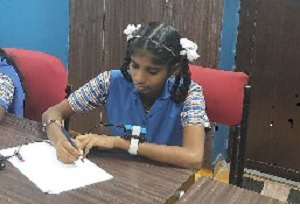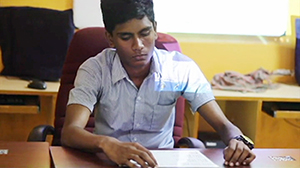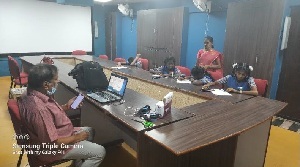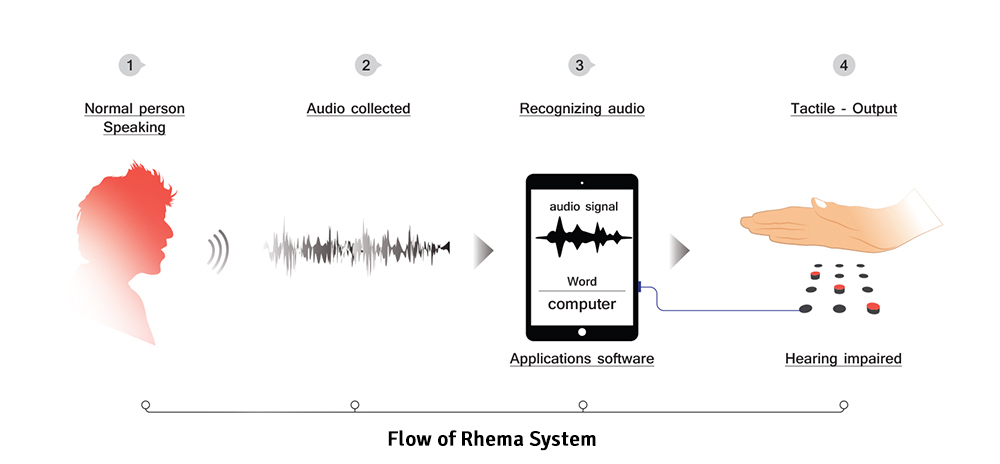


A Revolutionary-method of delivering digital-data tactually. 'voice' communication can be done with the disabled in near real-time, economically, speedily, accurately and with available resources without costly R&Dinvestments.
Rhema operates as a phonetics-based system, meaning it is easily adaptable into any language by simply developing a language-corpus for that particular language.
What is a Tactile-Device?
A Device that makes use of touch to help individuals who have certain disabilities, such as deaf-blindness, to communicate. It measures information arising from physical-interaction with its environment.
Human speech is processed to digital signs first, and then translated into corresponding tactile-patterns to the user.
Tactile-patterns are the output of Rhema that makes use of 'touch-to-feel', to help individuals with disabilities to understand the words spoken to them. All audible-signals are fed into the Rhema system; which filters the noise and converts the speech into individual phonemes. These phonemes are used for framing the patterns which in turn is used to trigger the tactile-system, eventually presenting the corresponding pattern through the device.

Priya!... on hearing her name being called out. Priya responds by gleefully raising her hands. For most children, this might seem like a simple feat. For Priya, a hearing-impaired child, this is her shot at normalcy. As her name is called out again, she suggestively responds in sign language as to why her name is repeatedly summoned. When her friends name “Ramya” is called out, she points in her direction. How is she able to comprehend the noise amidst her hearing impairment? Both Priya and Ramya, class 8 students, are a part of a first-ever field trial of a unique system that would establish voice communication in a tactile format. What this means is that these kids would be able to comprehend speech, not just sign language – for the very first time.

Primary target of 1000 users from all over the state with 12-week training schedule and not more than 25 trainees per class/session will help in establishing proof of the system and taking it to a global user base.
Provide board, accommodation, transport for the trainees during the period. Give one set of unit at no cost for their use in normal environment.
